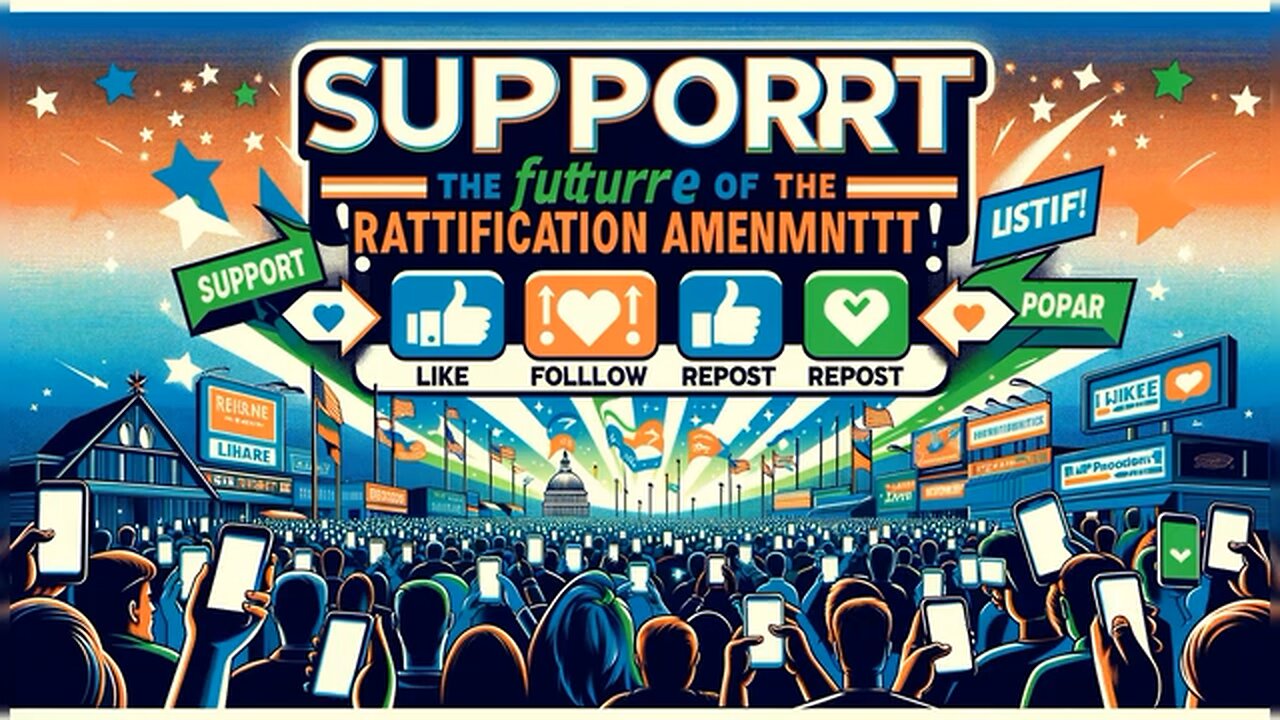Premium Only Content

The Citizens Ratification Amendment (CRA) introduces an innovative approach to democratic participation in the United States. This plan envisions the creation of the Citizens Ratification Branch (CRB), an independent entity that functions alongside the existing branches of government, without altering their structure or functions. Hereâs a detailed overview of the CRAâs strategic vision:
### Enhancing Democratic Engagement
The CRA is designed to deepen the democratic process by enabling direct citizen participation in the governance of laws and regulations. Through the CRB, citizens will have the power to ratify or unratify laws each month via an advanced, secure online portal. This continuous engagement ensures that the citizenry's voice is not only heard but is influential in shaping the legislative landscape.
### Advanced Security and Technology
Utilizing state-of-the-art technology, including quantum computing and artificial intelligence, the CRA ensures the integrity and security of the ratification process. This technological framework is built to safeguard against tampering and to guarantee that each citizenâs vote is accurately counted and protected, maintaining a high standard of trust and reliability.
### Transparency and Accountability
A cornerstone of the CRA is its commitment to transparency. Results of ratifications are openly published on the portal, with certified outcomes following comprehensive forensic audits. This transparency ensures that all citizens can trust and verify the accuracy of the results, fostering a climate of accountability.
### Nonpartisan Operation
The CRB operates under a strict nonpartisan mandate, which is essential for it to function effectively as a fair and unbiased platform. This nonpartisan stance helps ensure that no single group can dominate the process, thereby maintaining a balanced and equitable system that reflects the diverse views of all Americans.
### Governance Structure
The CRB is managed by a general manager appointed by the President and managers from each state, reflecting a national and comprehensive approach to governance. This structure allows for democratic oversight of the management itself, with provisions for removing managers if necessary, ensuring the system remains dynamic and responsive to the public will.
### Impact on Public Policy
By providing a direct mechanism for citizen participation, the CRA is poised to make government more responsive and aligned with the collective will of the people. It offers a method for the public to express approval or disapproval of laws directly, potentially leading to legislation that more accurately reflects the public interest.
### Future-Ready Governance
The CRA is not just about the present but is also geared towards making the legislative process robust enough to adapt to future challenges and changes. By integrating advanced technologies and a flexible management system, it prepares the United States to meet the evolving needs of its citizens in the 21st century and beyond.
### Conclusion
The Citizens Ratification Amendment represents a significant evolution in how democracy is practiced in the United States. By providing a platform for direct and secure citizen engagement in the law-making process, the CRA seeks to enhance the effectiveness, responsiveness, and transparency of governance, thereby revitalizing the foundational democratic principles of the republic.
-
 7:33:46
7:33:46
Phyxicx
11 hours agoRaid & Rant with the FF14 Guild on Rumble! Halo Night just wrapped up! - Go Follow all these great guys please! - 2/15/2025
74.5K1 -
 10:42:19
10:42:19
Reolock
13 hours agoWoW Classic Hardcore (LVL 60) | RAID DAY | Rumble FIRST HC Raid
52.6K2 -
 3:10:03
3:10:03
Barry Cunningham
10 hours agoTRUMP WEEKEND BRIEFING! MORE WINNING...MORE LEFTIES LOSING IT!
42.5K28 -
 2:20:09
2:20:09
Tundra Tactical
10 hours ago $1.84 earnedIs Trumps Executive Order A Second Amendment Wishlist???: The Worlds Okayest Gun Live Stream
25.5K1 -
 2:33:51
2:33:51
John Crump Live
15 hours ago $17.44 earnedSaturday Night Main Event!
80.6K7 -
 13:57
13:57
TimcastIRL
20 hours agoTrump NUKES IRS After DOGE Investigation, OVER 9000 Employees To Be FIRED
98.2K159 -
 13:35
13:35
Russell Brand
13 hours agoPFIZER JUST MADE THEIR NEXT MOVE AND EXPERTS ARE TERRIFIED
119K226 -
 1:15:57
1:15:57
Victor Davis Hanson Show
23 hours agoOver Here, Over There: the Russo-Japanese War and Trumpian Peace Policy
55.2K34 -
 23:55
23:55
MYLUNCHBREAK CHANNEL PAGE
1 day agoThe Nephilim Are Here
87.6K71 -
 1:00:58
1:00:58
Break The Cycle w/ Joshua Smith
10 hours ago $1.57 earnedBreak The Cycle Ep. 247: Funny Guys w/ Robbie "The Fire" Bernstein
25.5K1